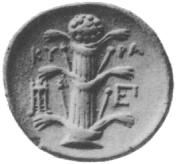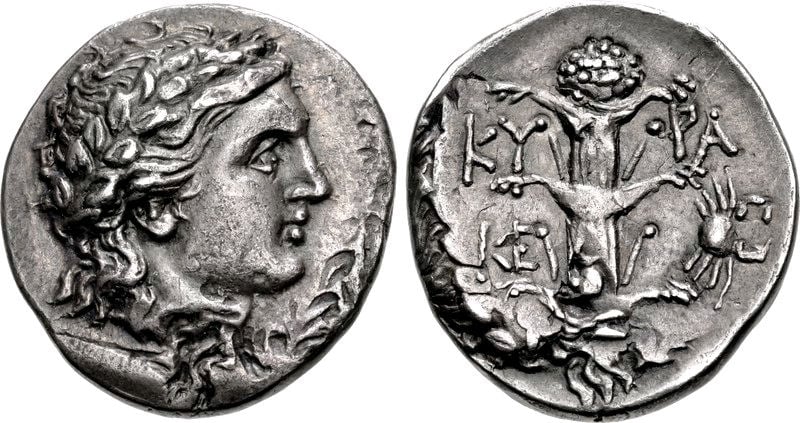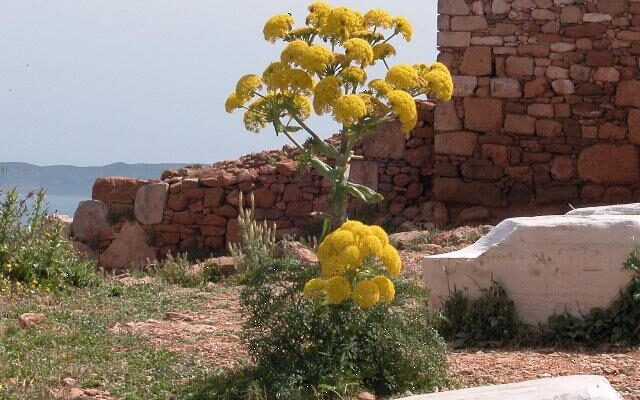The “miracle” plant Silphium consumed by Ancient Greeks, Romans, and Egyptians, which was thought to have become extinct two thousand years ago, has recently been rediscovered in Turkey by a professor, who thinks he’s found a botanical survivor.
The plant, which the Ancient Greeks called silphion (silphium), was a golden-flowered plant. It was once the most sought-after product in the Mediterranean even before the rise of Athens and the Roman Empire.
It is believed that the plant with yellow flowers attached to a thick stalk was crushed, roasted, sauteed, and boiled for medicinal purposes, food, and even contraception. During the reign of Julius Caesar, more than a thousand pounds of the plant were stockpiled alongside gold in Rome’s imperial treasures, and silphion saplings were valued at the same price as silver.
However, just seven centuries after the adored plant was first documented growing along the coast of Cyrenaica in what is now modern day Libya, silphion disappeared from the ancient Mediterranean world.
Roman chronicler Pliny the Elder in his Natural History claims that “just one stalk has been found” of the plant in the first century A.D., “and it has been given to Emperor Nero.” This was the last documented account of the silphion.
Inspired by ancient accounts, botanical explorers throughout the Middle Ages perpetually sought the plant across three continents although in vain. Consequently, historians believed the disappearance of silphion to be the first recorded extinction of any species, plant, or animal.
Despite the plant having been perceived to be extinct for centuries and having completely disappeared from the history books, a researcher at Istanbul University, Mahmut Miski, suspects he has re-discovered the ancient plant. He believes the Ferula Drudeana that grows on Mount Hasan is the elusive ancient plant—nearly a thousand miles from where it once grew.
According to a report by National Geographic, the researcher found it has similarities with the silphion plant which line up with old botanical texts and images of the plant on Ancient Greek coins.

The researcher has noticed that both plants have the same thick branching root and yellow flowers. In addition, both have powerful medicinal purposes. Ferula Drudeana has anticancer compounds and anti-inflammatory properties much like those known to be found in silphium.
Even though Ferula Drudeana is found hundreds of miles from where it originated, according to Miski, it has been found in two locations in Turkey, which were once home to Ancient Greeks thousands of years ago. One of these locations is Cappadocia.
Similar medicinal compounds as the ancient plant
Miski, who specializes in pharmacognosy, the study of medicines derived from natural sources, first encountered the modern plant he now believes to be silphion while conducting postdoctoral research. He had received a grant to collect specimens of Ferula, which is in the same family as carrots, fennel, and parsley, and has the reputation for yielding many novel disease-fighting compounds.
While Miski was studying the plants on Mount Hassan, he determined it had thirty secondary metabolites that have medical purposes. Among the compounds are many have cancer-fighting, contraceptive, and anti-inflammatory properties. Miski believes that future analyses of the plant will reveal the existence of dozens of yet-to-be-identified compounds of medical interest.
On Mount Hassan, Miski also encountered caretakers of the plants who informed him sheep and goats are fond of the leaves, as is mentioned in Pliny’s record of the ancient silphion.
According to Pliny’s records, sheep and goats would graze in pastures where silphion grew. The sheep would fall asleep after consuming it, and it caused goats to sneeze. His text reads: “The juice of this plant is called ‘laser’ and it is greatly in vogue for medicinal as well as other purposes, being sold at the same rate as silver. For these many years past, however, it has not been found in Cyrenaica.”
Similarities with Cyrenaican coins
According to a 2021 study published in the journal Plants by Miski and his team, Ferula drudeana had similarities with the silphion as described in ancient text and depicted on Cyrenaican coins: from thick branching roots to celery-like leaves.

However, similarity in appearance wasn’t the only compelling link. It is said that the first silphion appeared after a “heavy spring downpour,” which, in those days, was called “black rain.”
According to Miski and his team, “We find it stated by the most trustworthy among the Greek writers…that this plant made its appearance near the gardens of the Hesperides and the Greater Syrtis immediately after the earth had been soaked on…by a shower as black as pitch.” This event took place seven years prior to the foundation of the city of Cyrenae.
Miski observed that when rains came to Cappadocia in April, Ferula Drudeana would spring from the ground, growing up to six feet in just a month.
Moreover, as ancient silphion resisted cultivation, it had to be harvested in the wild. It is said that Cyrenaic nobles entrusted its cultivation to desert nomads. Two attempts reported by Hippocrates to transplant it to mainland Greece failed. Similarly, Miski found that Ferula Drudeana is difficult to transplant. He found that the only way it could be done was by using cold stratification, a process of subjecting seeds to both cold and moist conditions. By utilizing this technique, Miski and his team were able to grow Ferula in a greenhouse.
One of the main reasons Ferula had not immediately been identified as silphion is mainly because of its location. However, as Miski had discovered, the region in Turkey where Mount Hasan sits was home to ancient Greeks thousands of years ago, and these people could have easily transported the plant.
Erica Rowan, an associate professor in archaeobotany at Royal Holloway University of London, finds Miski’s speculations plausible. “The ancients were very good at transporting things,” Rowan points out. “There’s no reason why people from Cyrenaica couldn’t have brought the seeds to Cappadocia and planted them. They’re similar enough with a Mediterranean climate. And this Ferula species does look like what’s shown on the coins.”



